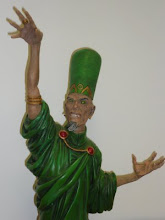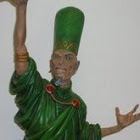 A deeply engaging exploration of an extraordinary episode of American maritime history. On the 20th November 1820 the whaling ship, Essex, was rammed by a sperm whale forcing the crew to take to three small boats and endure an appalling journey of thirst, starvation and endurance. Nathaniel Philbrick places the events prior to the sinking of the ship into context, clearly establishing why they were hunting whales in the first place and then provides a harrowing account of the aftermath.
A deeply engaging exploration of an extraordinary episode of American maritime history. On the 20th November 1820 the whaling ship, Essex, was rammed by a sperm whale forcing the crew to take to three small boats and endure an appalling journey of thirst, starvation and endurance. Nathaniel Philbrick places the events prior to the sinking of the ship into context, clearly establishing why they were hunting whales in the first place and then provides a harrowing account of the aftermath.The Essex was whaling ship that had sailed from Nantucket, a tiny island off the coast of Massachusetts, was for a period the center of a global oil industry. Whale oil was a vital energy source at the time, used in steet lights and as a lubricant in machinery. Nantucket was home to the most important and productive whaling fleet of the time, for reasons that Nathaniel Philbrick makes clear, they sent out fleets of ships to the far reaches of the globe in search of whales, specifically sperm whales. The sailors of Nantucket were extraordinary explorers and hunters, faring deep into the Pacific in search of their prey on multi-year voyages that could be massively profitable.
Those voyages, even if they did not include being shipwrecked, were feats of endurance in their own right and they shaped the society and population of Nantucket in profound and lasting ways. The small population of the island, the near total dominance of a single industry and the tight intertwining of business, social and personal relations and religion all created special context for the crew of any Nantucket whaling ship. The impact of this context on the crew after the disaster is one of the most fascinating threads which is followed with care and thoughtful detail in this book.
The most visible aspect of the survivors journey is the way that they were driven to cannibalism to survive and the impact this had on the final survivors and the relations of the living and the dead in Nantucket. There is a great deal of detail about the physical and mental impact of thirst and starvation on body and mind, the way that the will to survive is altered, eroded and dominated by the need to eat and drink. At the same time the truly astounding feats of navigation complete by the men in tiny boats in the vast Pacific are explained with force and clarity. No prior knowledge of sailing is required to follow and understand the scope and scale of what was accomplished, understand the terrible errors that were made or be amazed at the unrelenting efforts to survive that were needed and made.
By placing the events of the voyage in a wider and longer context, the final survivors are tracked after their rescue and the impact of the story traced on the wider US context, Nathaniel Philbrick has written an absorbing, terrifying and deeply moving history that is a substantial pleasure to read.




